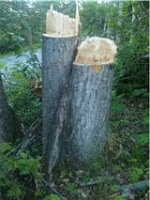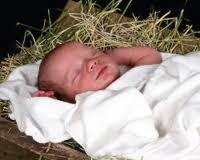06 17 11 The Role of People (Part 2)
I believe the issue of sustainable lifestyles will hit Alaska harder and quicker than much of the rest of the United States. At present it is estimated that 98 percent of Alaskan food is shipped to Alaska by barge or airplane—though that may not include subsistence activities in remote villages. The cost of transportation is skyrocketing, largely due to high fuel costs. Alaskans will no choice but to remember old ways, and develop new ways, of providing food for themselves.
One of the permacu lture guidelines for landholders is to develop a 30-year plan for creating a sustainable living space on the land. Sustainable means working with the land and its ecosystems until the land sustains itself and its creatures permanently. Humans count among the creatures sustained by the land.
lture guidelines for landholders is to develop a 30-year plan for creating a sustainable living space on the land. Sustainable means working with the land and its ecosystems until the land sustains itself and its creatures permanently. Humans count among the creatures sustained by the land.
The 30-year planning process helps landholders to become learner-doers. By this I mean that learning is a never-ending process. Though it is helpful to begin with some research on permaculture and benefit from the learning others have already provided, much of the learning grows through the process knowing your own land, knowing and working with your own local community, and becoming comfortable with the reality that your own knowledge is constantly expanding. A 30-year plan lets a person be comfortable in the beginning, without having to know it all and without having to take on more than is realistic at any one time.
Cindee and I have not yet got our 30-year plan together, though we are thinking on it. In the meantime the challenge for us is to decide what projects to take on this year.
- We are sure we don’t want so many cottonwood trees, since we are both so allergic to them, so cutting down some trees seems like a good task for this year.
- In permaculture, there is no waste. All waste is a resource from some other part of the sustainable ecosystem we are providing. So the question arises as to what to do with all the downed cottonwoods. That could be a pretty major project, too.
- We already hunt and fish for most of our meat, but we buy nearly all our fruits and vegetables. Could we begin enough putting together enough gardening space so that we could produce at least half our food by next year?
- What about the leaky garage roof?
- Or the drainage problem in our driveway?
- Or our neighbor’s need for a little help with her greenhouse, too?
- Or replacing the old steps leading down to the back of the garage?
- Or working on a solar-electric addition to the Bioshelter?
- Or…
The list is getting longer and longer. Clearly there have to be some priorities.
Of course the Bioshelter is not much different than our whole planet when it comes to the need for human prioritizing. The more than seven billion people on the planet now constitute the single most prevalent  stressor in the world to all life systems on the planet. We have to recognize this fact and begin acting proactively to help our lifestyle on this planet to become more sustainable. Whether we call it permaculture or not, we have to begin developing different patterns of human life on this planet. We need a planetary 30-year plan.
stressor in the world to all life systems on the planet. We have to recognize this fact and begin acting proactively to help our lifestyle on this planet to become more sustainable. Whether we call it permaculture or not, we have to begin developing different patterns of human life on this planet. We need a planetary 30-year plan.
In the first creation story, the Bible describes God as telling the humans that they are to have dominion over the creatures of the earth (Genesis 1:28). There has been much debate as to whether this is a good way for humanity to think of itself or not, but it should be true now that it has become an existential reality. We either recognize that we play a huge role on the wellbeing of this planet, and are responsible to act proactively, or we continue destroying much of the ecosystem we love and depend on—and discover that we destroy ourselves in the process. The dominion argument seems moot. We have huge power over the future we are creating for so much of earth’s life.
What is helpful is to remember that in this part of Genesis, the dominion over earth’s creatures assumed a participatory role in an ecosystem (garden) that provided for all God’s creatures. Dominion was to be patterned after God, who used power and responsibility to be with the creatures God loves, and to nurture them for the fullest life possible. God, it seems, also plans for the future—a future in which life thrives. I think that is a great interpretation of the seven-day creation story.



Comments
Post a Comment